I was doing sewing backstitch that day but I need help figuring out How long should a backstitch be! I dont know why but deciding the right length seems rocket science to me.
🫤 cause there are so many mixed numbers on the internet.
So, I ran to that backstitch expert Hasan and asked him.
He said-
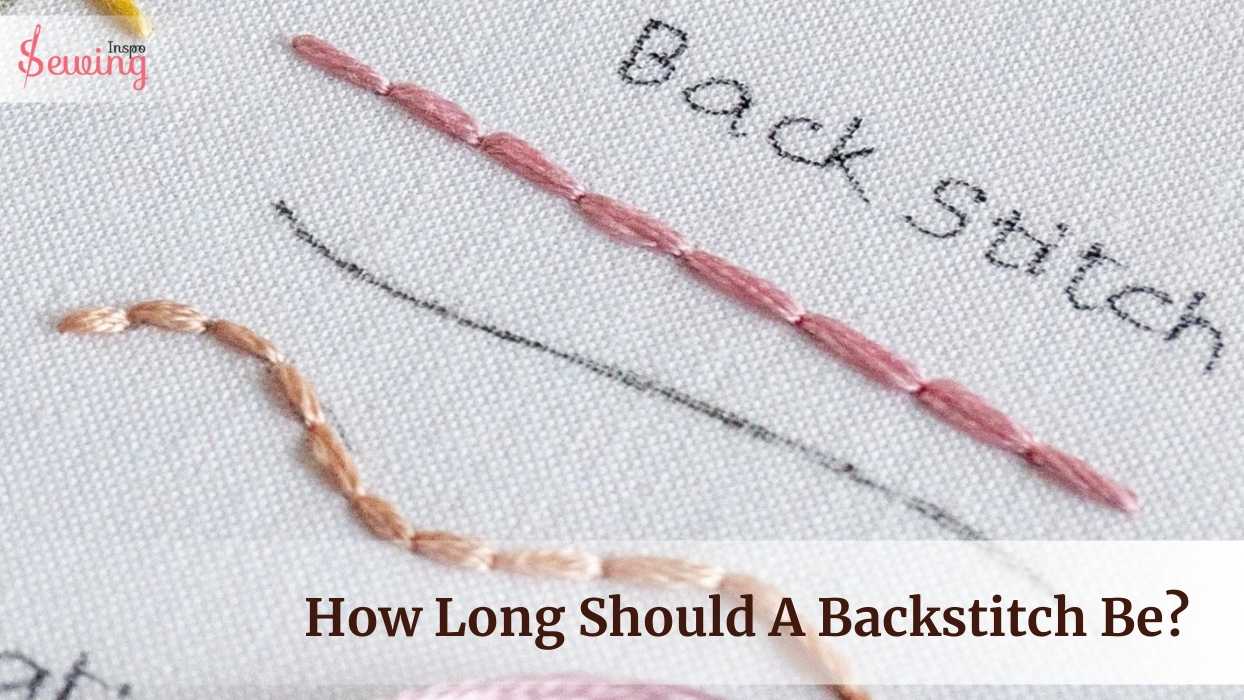
How Long Back stitch
The backstitch is 1 to ⅛ inches long. But the length depends on your backstitch pattern.
I asked, How do I know which length suits my backstitch pattern?
He said every question comes with an answer.😉 let me tell you.
What you will get to know:
- Reinforce seams with shorter stitches at the start and end.
- Adjust stitch length based on fabric characteristics for durability.
- Match stitch length to thread thickness and stitching purpose.
Table of Contents
How Long Should A Backstitch Be?
Backstitches that are about ⅛ to ¼ inch long. The length might vary, especially if you’re working with thicker fabrics, which usually need longer stitches. Also if your backstitch thread plays a big role here.
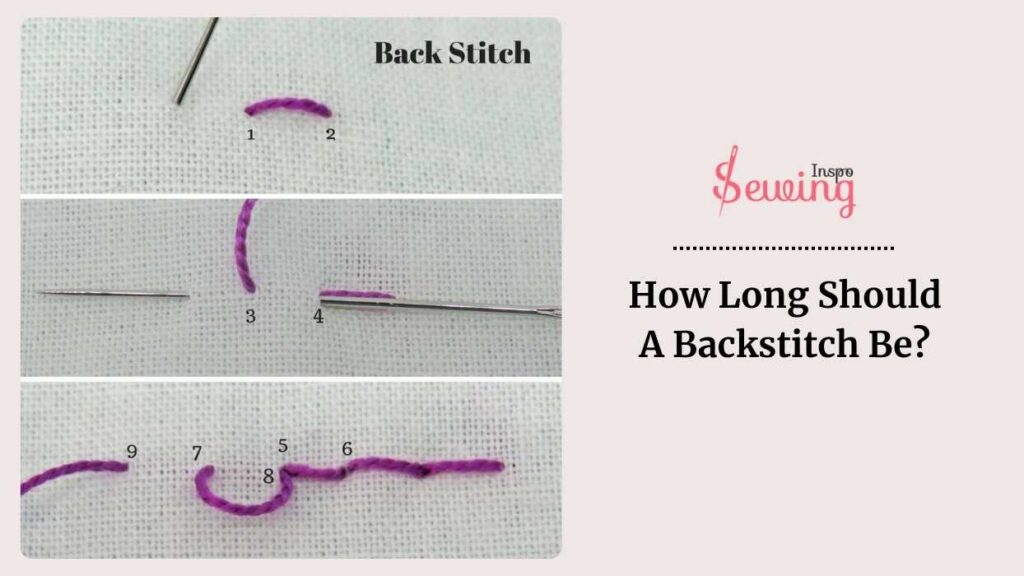
But keep in mind, that if-
Your thread is too short, you’ll be rethreading your needle often. But if it’s too long, you risk more knots and tangles. A good length to start with is about 15 to 20 inches (38 – 50 cm). This length is perfect to make stitch the permanent.
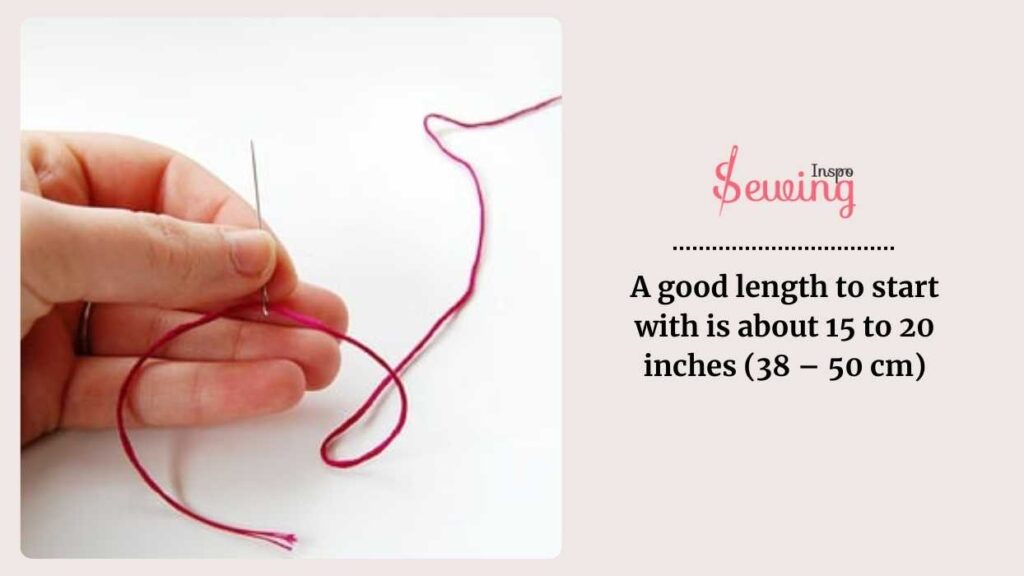
And to avoid bulky seams,
Make your backstitches shorter at the beginning and end of the seam. Try 1mm stitches or about 18-20 stitches per inch for the first half-inch. This length is perfect for all backstitch family.
After that, switch to your desired stitch length for the rest of the seam, then shorten the stitches again for the last half-inch. This will keep the seam secure and less bulky depending on the back stitch pattern just like mattress stitch hand sewing.
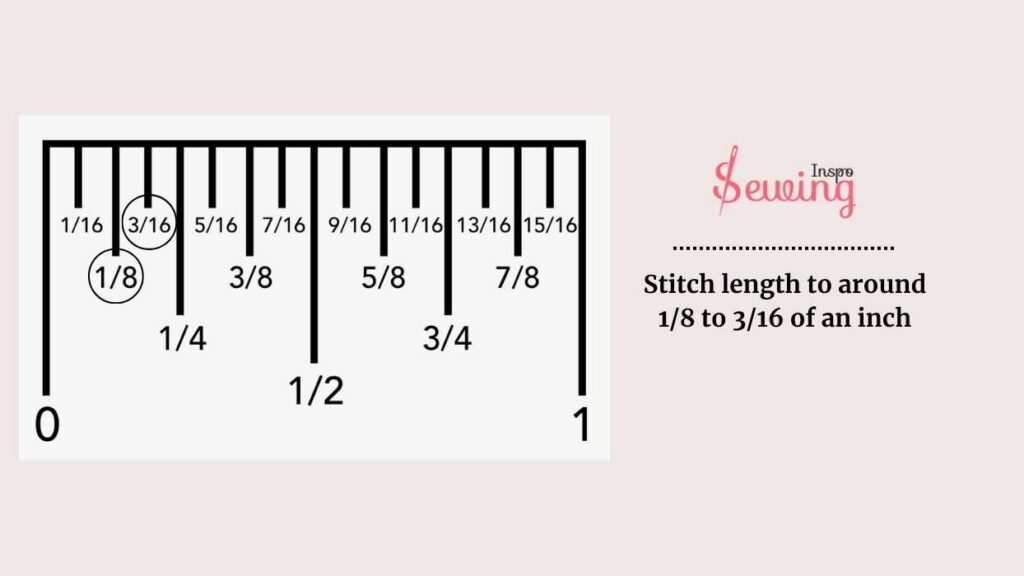
But wait! 😐 don’t think that length is always the right ratio. Few things can change the length of the backstitch. Which is:
- Fabric Type For Backstitch By Hand
- Sewing Thread Thickness Chart
- Purpose of the Stitch In Sewing
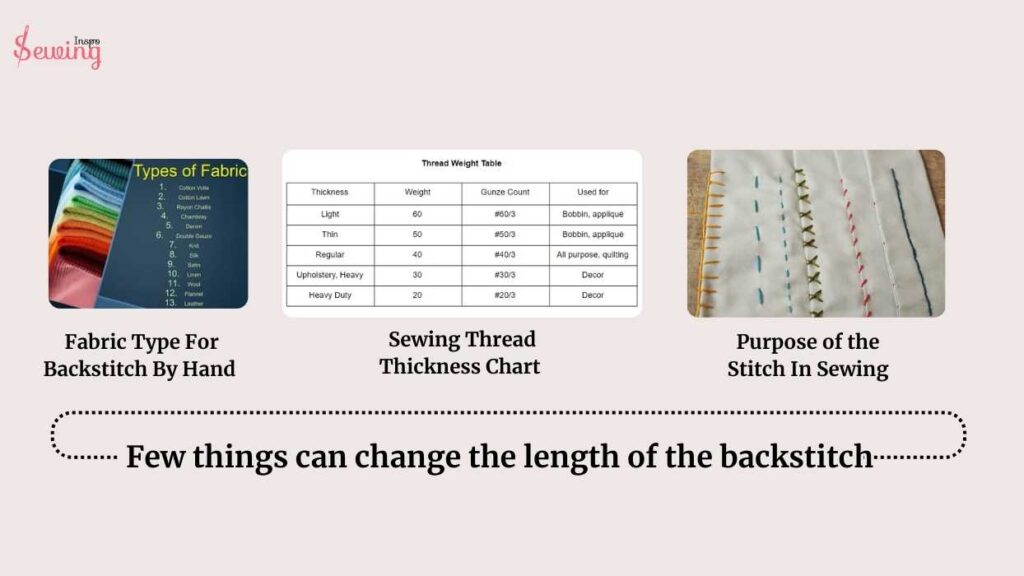
Fabric Type For Backstitch By Hand
The back stitch sure is the strongest stitch by hand but Fabric type matters so much in backstitch length. Why? Cause different type of fabric has different types of characteristics. Just like the use of backstitch changed depending scenario. Some may handle strong stitches and some may can’t.
You need to know fabric characteristics like your boyfriend to stitch the right length of backstitch.😜

But no worries, I got your back. I’ll give you an overview of backstitch length depending on fabric type:
For lightweight fabrics like silk or chiffon, use shorter stitches, about ¼ inch (2 mm), to avoid puckering. The thick fabric needs a ⅛ inch 3mm stitch backstitch.
Medium-weight fabrics like cotton or linen work well with stitches between 2.5-3.0mm for a good balance of strength and integrity.
For heavyweight fabrics like denim or canvas, go for longer backstitches, around 1/4 inch (6 mm), to prevent bulk and ensure durability.

Stretch fabrics like jersey or knit need shorter stitches, around 1/8 inch (3 mm), to keep the seam flexible and prevent popping.
Sewing Thread Thickness Chart
It’s important to consider the thickness of the thread you’re using. For thin threads like cotton or polyester, which are typically 30-50 weight, then keep your stitches quite small, around 1/16 to 1/12 of an inch.
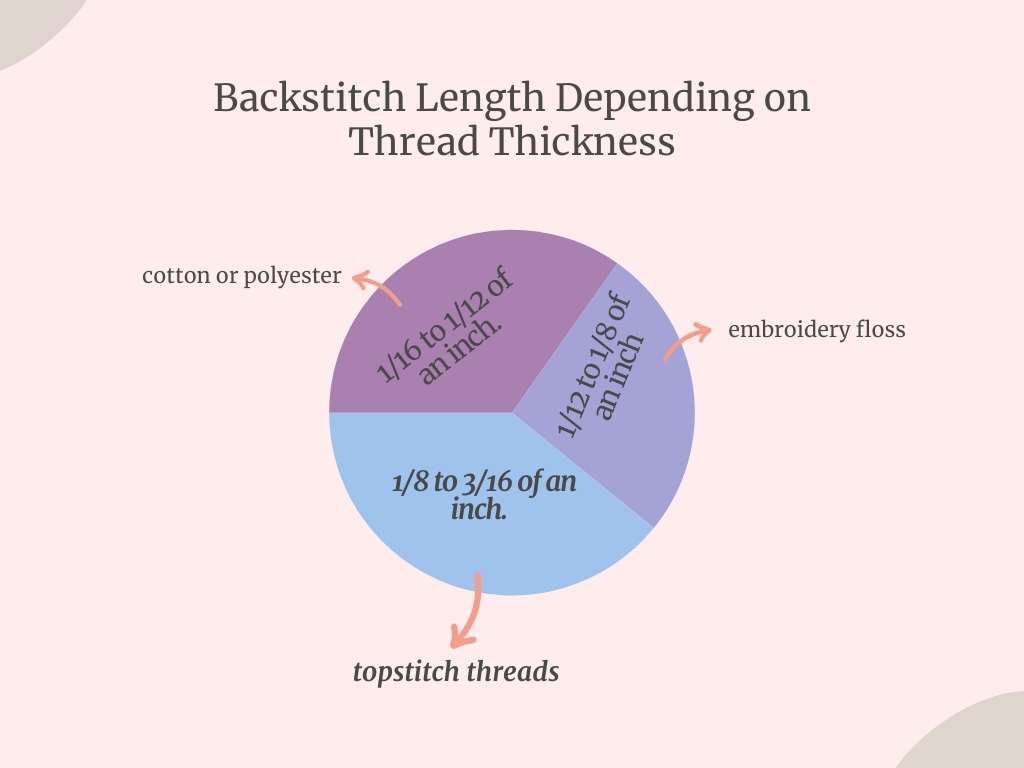
If you’re working with medium threads like embroidery floss or all-purpose thread, usually 40-60 weight, aim for a backstitch length of about 1/12 to 1/8 of an inch. This length is perfect for whipped back stitches.
When you switch to thicker threads, such as heavy-duty or topstitch threads (70-90 weight), you should increase your stitch length to around 1/8 to 3/16 of an inch.

Just like that change the length of the backstitch according to your thread. At first, it would be a little difficult to understand the rhythm but over time you will get it. Trust me! 😁 I hope the sewing thread thickness chart helps you out to decide.
Purpose of the Stitch In Sewing
The length of your backstitches also depends on Back stitch look like. For regular seams, go for 1/12 to 1/8 inch (10-12 stitches per inch) for strong reinforcement.
This benefits from longer stitches, around 1/8 to 3/16 inch (8-10 stitches per inch), for a decorative effect. Along with that if you are doing back stitch in cross stitch then the ratio will be different.
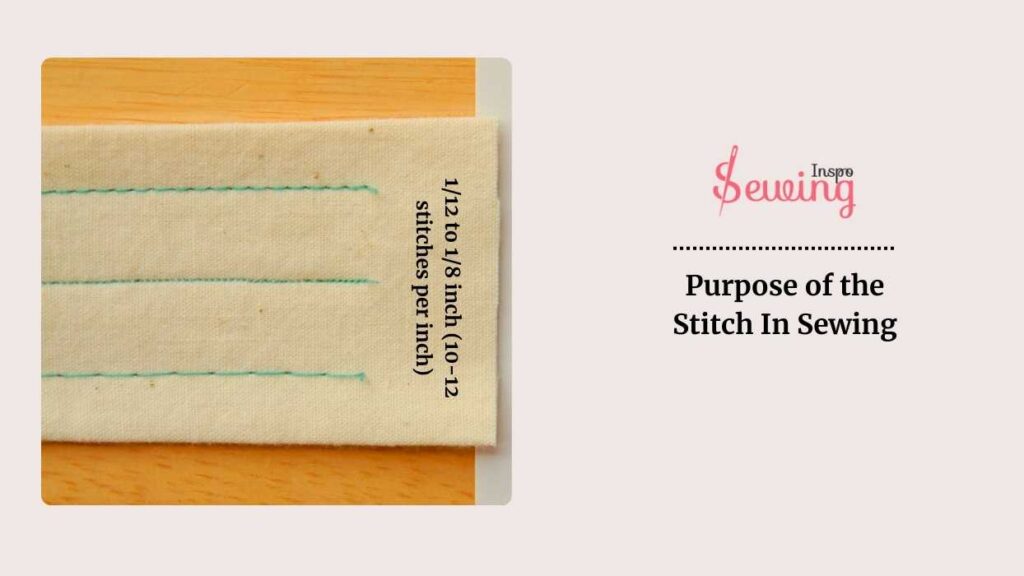
And,
Quilting typically uses 1/8 to 1/6 inch (10-12 stitches per inch) to secure layers neatly. But if you are doing a back tack stitch then the length will be smaller. Shorter stitches of 1.5-2 mm (12-16 stitches per inch) are ideal for intricate embroidery. This length changes depending on the type of back stitch embroidery you are working on.
However, a 0.4-inch backstitch also can help you create a tiny yet beautiful stitch.
Sewing Thread Weight Chart
Thread weight influences the thread length of backstitch. Here is how i normally maintain both of things.

| Thread Weight | Recommended Thread Length |
| 30 wt (Thick) | 16–18 inches |
| 40 wt | 18–20 inches |
| 50 wt (Standard) | 20–22 inches |
| 60 wt | 22–24 inches |
| 80–100 wt (Very Fine) | 24–26 inches |
How Far Should You Backstitch?
Generally, the backstitch is 1 or ½ inches far. This ensures that the stitches are securely locked in place. And the back of a back stitch looks perfect.

If you’re working on thicker fabrics or seams that will undergo stress, you might want to backstitch a bit more to ensure durability. Adjust based on the project’s requirements and the type of fabric you’re working with.
How To Do A Long Back Stitch?
To do a long backstitch in sewing:
- Start by knotting the end.
- Push the needle through the fabric from the back to the front.
- Move the needle forward by a longer stitch length (like 1/2 inch).
- Bring the needle up through the fabric a long stitch length ahead.
- Push the needle through from front to back and pull tight.
- Insert the needle back into the end of the first stitch and pull tight.
- Keep going, always bringing the needle up a long stitch length ahead and then back to the end of the previous stitch. This will help you to tie off the back stitch.
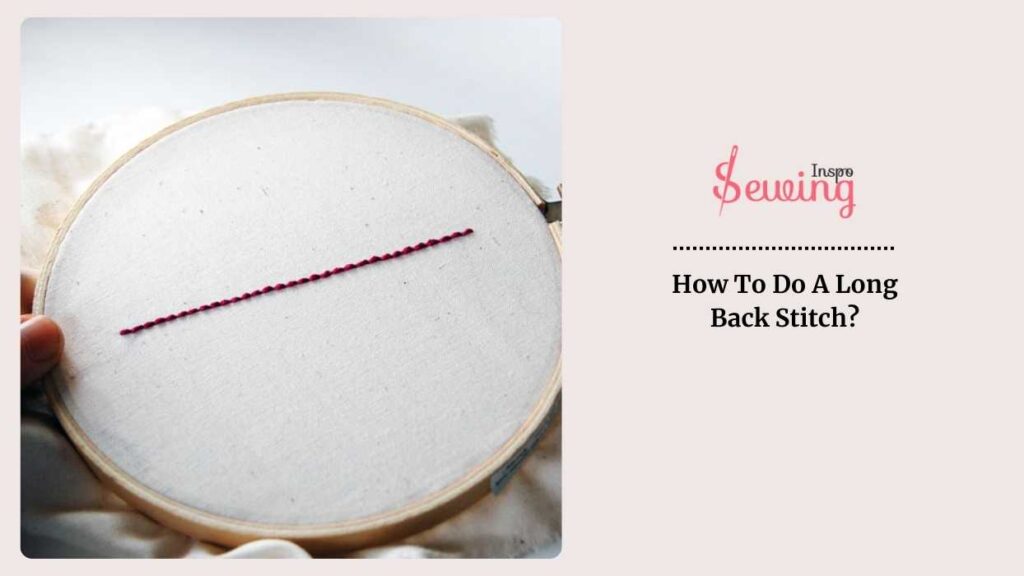
Ok So, What Is The Normal Back Stitch Length?
The normal backstitch length is between 1/8 inch (about 3 mm) and 1/4 inch (around 6 mm).
Why? Well, a shorter stitch length of 1/8 inch backstitch tends to work best. It gives the stitching a cleaner, more detailed look. On the other hand, for everyday sewing tasks, such as repairing seams or stitching a more durable seam, you might prefer a slightly longer stitch.
It’s all about finding that balance between neatness and practicality for the project at hand.
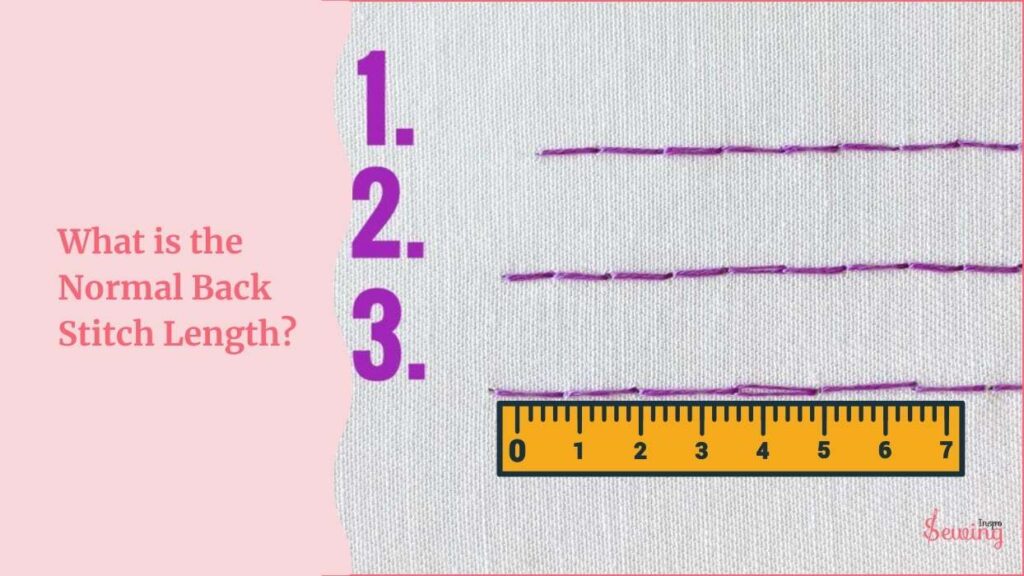
Frequently Asked Questions(FAQ’s)
Why Is Backstitching Important?
Backstitching at the beginning and end of a seam helps secure the stitches and prevents them from unraveling over time. It reinforces the seam, making it more durable.
When Should I Backstitch?
Backstitch at the start and end of every seam you sew. This practice ensures that all your seams are securely fastened and reduces the chances of them coming undone.
Can I Skip Backstitching If I Use A Serger?
Even if you use a serger (overlock machine) to finish your seams, it’s still important to backstitch at the beginning and end of your seams on a regular sewing machine. Sergers trim fabric edges and wrap threads around them, but they don’t secure the ends of the seam as backstitching does. This step adds extra security to your sewing projects.
Conclusion
So, that’s How long should a backstitch be. At first, it may seem a little complicated but with some practice, you can decide the length on your own. Do you get it now? If you still have questions then reach out to sewinginspo.

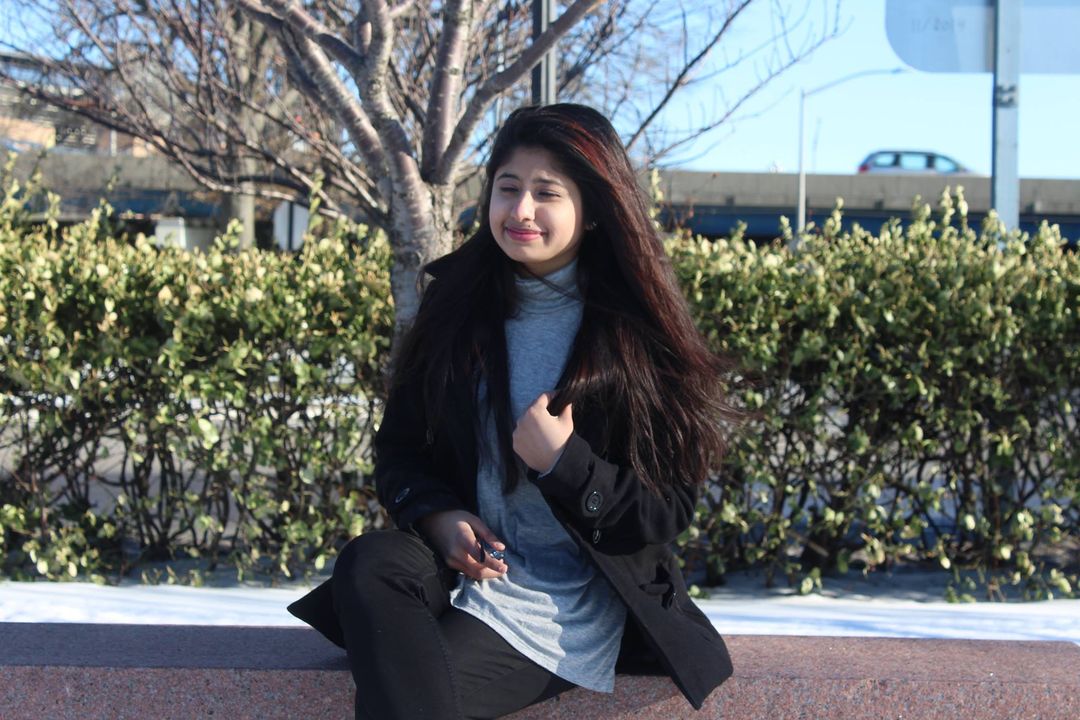
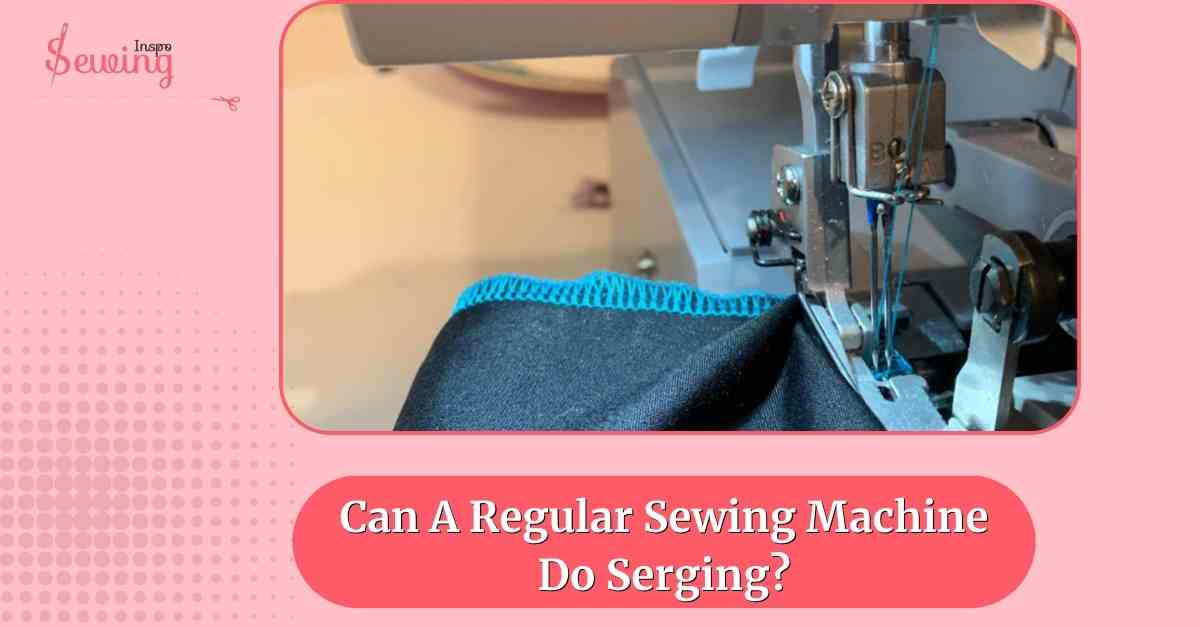
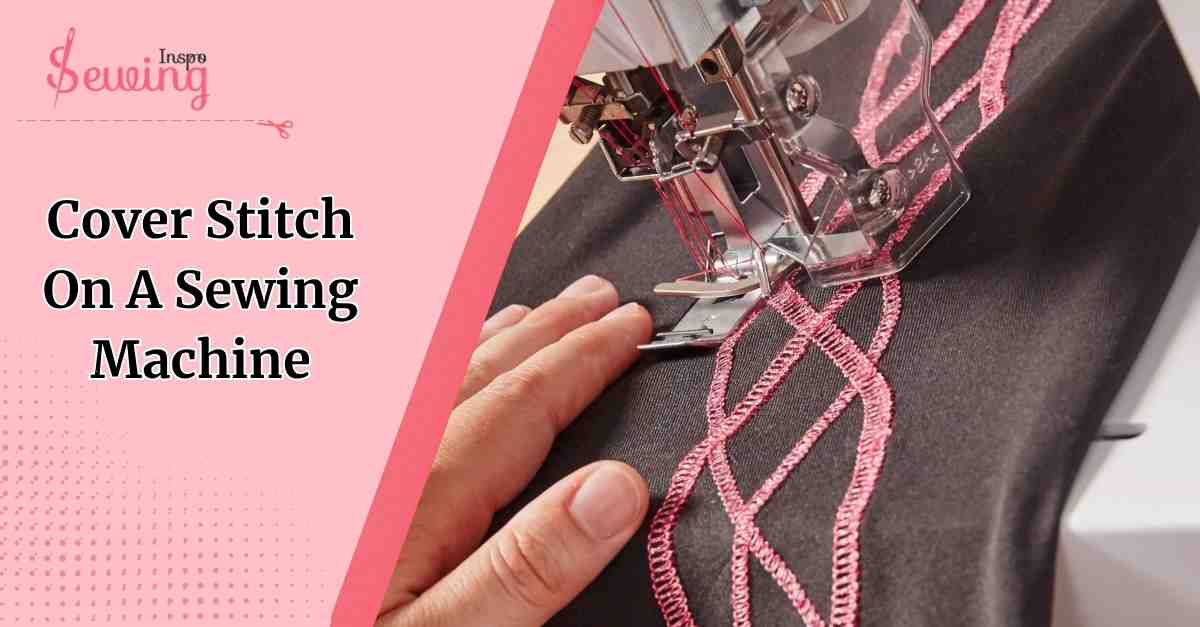
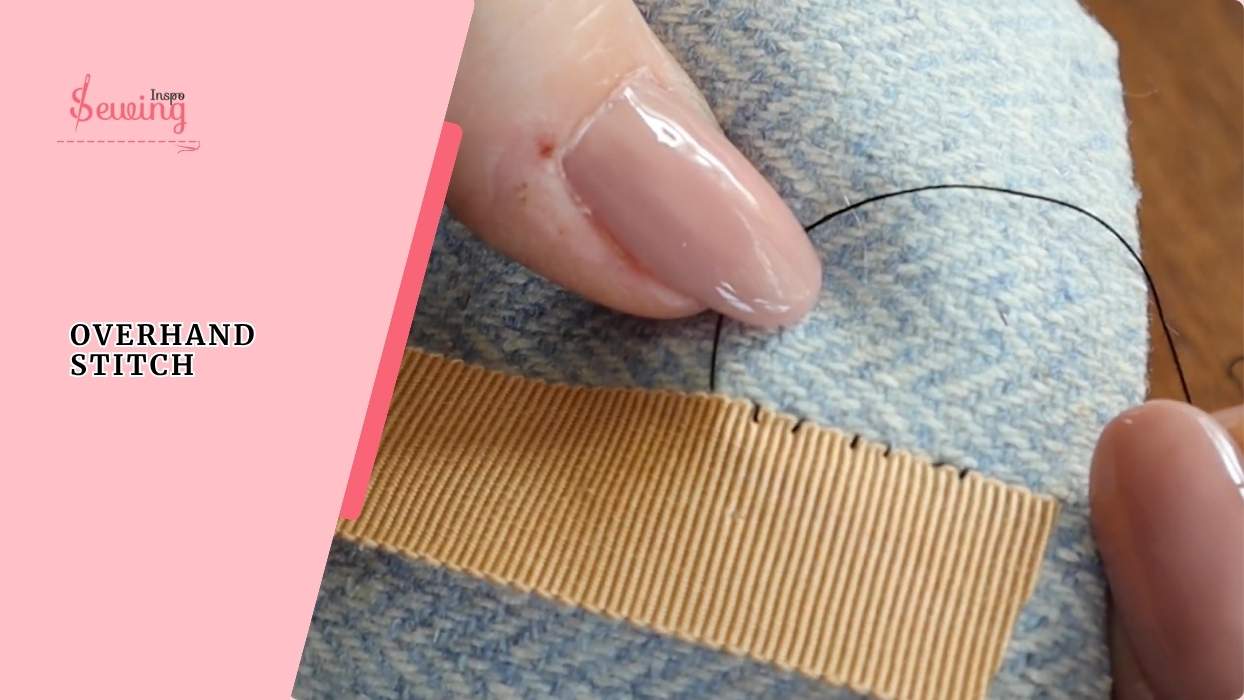
Leave a Reply